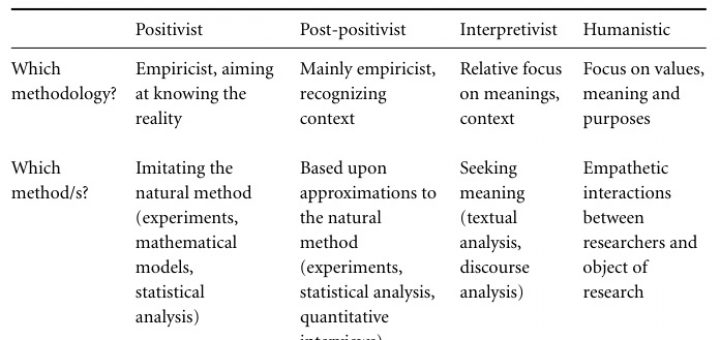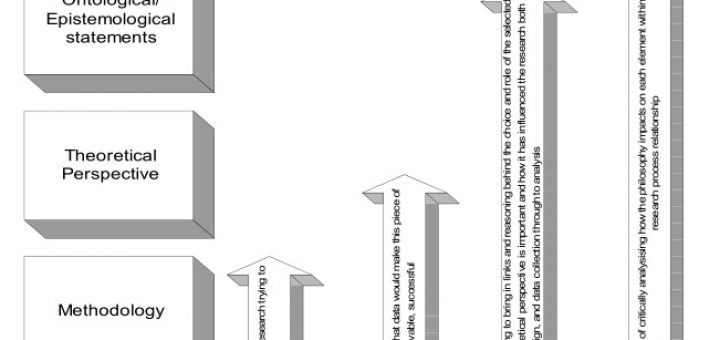Monthly Archive: January 2017
Steganography: ilmu dan seni menyembunyikan (embedded) informasi dengan cara menyisipkan pesan rahasia di dalam pesan lain . Steganografi digital: steganografi pada data digital dengan menggunakan komputer digital Steganografi dengan media kepala budak (dikisahkan oleh...
Kalau dulu dikenal istilah marketing myopia, sekarang ada istilah methods myopia. Simak tulisannya: Pemasaran merupakan disiplin ilmu yang kompleks dan senantiasa berkembang, sehingga berbagai fenomena menarik serta penggunaan metode yang beragam amat bermanfaat dalam...
Menurut Crotty (1998) dalam setiap proses penelitian ada empat unsur dasar. Epistemologi Perspektif teoritis Metodologi Metode Gambar ini dijelaskan oleh tabel berikut. Namun Crotty tidak memasukkan ontology, dengan alasan: “Ontological issues and epistemological issues...
Asymmetric Information = A I Beberapa pengertian A I : a. Suatu kondisi dimana ada satu pihak memiliki informasi yang lebih baik dari pada pihak yang lain. Dalam konteks perusahaan, manajer memiliki informasi...
Subyek biasanya digunakan dalam riset eksperimental atau kuasi-eksperimental, individu ditempatkan pada suatu keadaan tertentu dan bereaksi terhadap adanya intervensi. Ini merupakan istilah yang pasif, diasosiasikan sebagai “real” science. Responden adalah istilah yang sering digunakan...
Bahan-bahan : Wortel 5 buah Apel hijau atau merah 1 buah Mentimun 1/2 buah (ukuran sedang) Buah bit 1/2 buah Seledri 1 batang Cara Membuat Jus Wortel Apel : Cuci semua bahan sampai bersih,...
WRITING AN INTERESTING TOPIC: HYPOCRICY BY Ignatius Septo Pramesworo Occasionally someone said writing and its process were difficult. I, however, try, try, and try again to write, and the results, may be, are...
Riset pada berbagai strata: S1, S2 & S3 Knox, K. (2004). A Researcher ’ s Dilemma – Philosophical and Methodological Pluralism. Electronic Journal of Business Research Methods, 2(2), 119–128. http://doi.org/10.1080/03085140500465899
PROSPEK PEREKONOMIAN INDONESIA 2017 Sri Mulyani Indrawati Menteri Keuangan Republik Indonesia Kuliah Umum Hari Ulang Tahun ke-47 Harian Media Indonesia Jakarta, 19 Januari 2017 MEMBANGUN FONDASI UNTUK PERTUMBUHAN YANG BERKELANJUTAN Sri Mulyani Indrawati...
BRAND AMBASSADOR are not a new concept for marketers. Most brands have used one or more types of brand ambassadors in one way or another. What’s different now is the scale of those brand...





